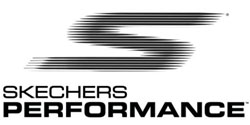Posts tagged students
Nobel Prize-winner David Wineland praised as mentor to CU-Boulder graduate students
Oct 9th
Wineland is a physicist with the National Institute of Standards and Technology in Boulder and internationally recognized for developing the technique of using lasers to cool ions to near absolute zero. His experiments have been used to test theories in quantum physics and may lead to the development of quantum computers. He shared the prize with Serge Haroche of France.
Wineland joined the CU-Boulder physics faculty as a lecturer in 2000 and currently works with four CU-Boulder graduate students pursuing doctorates, said physics department chair Paul Beale.

“It would be difficult to find a more brilliant and humble scientist,” said John Jost, who worked in Wineland’s group for about 10 years as a CU-Boulder doctoral student and postdoctoral researcher. “I feel lucky to have worked in his lab for my Ph.D. regardless of whether or not he won the Nobel Prize. He was always available when we had questions and problems in the lab and usually had some great idea about what to try next. At the same time, he gave us the freedom to figure things out on our own.”
In August, Jost began a Marie Curie fellowship as a postdoctoral researcher in the École Polytechnique Fédérale de Lausanne in Lausanne, Switzerland.
Wineland’s first demonstration of laser cooling in 1978 led many other scientists to pursue the laser cooling and trapping of atoms. His research helped make possible the creation of the world’s first Bose-Einstein condensate, for which Carl Wieman of CU and JILA and Eric Cornell of NIST and JILA and CU were awarded the Nobel Prize in physics in 2001. JILA is a joint institute of CU-Boulder and NIST.
Five CU-Boulder faculty members have now won individual Nobel Prizes. The other two winners are Tom Cech in chemistry and John “Jan” Hall in physics.
Fo
CU study: Graphene membranes may lead to enhanced natural gas production, less CO2 pollution
Oct 8th
The findings are a significant step toward the realization of more energy-efficient membranes for natural gas production and for reducing carbon dioxide emissions from power plant exhaust pipes.
Mechanical engineering professors Scott Bunch and John Pellegrino co-authored a paper in Nature Nanotechnology with graduate students Steven Koenig and Luda Wang detailing the experiments. The paper was published Oct. 7 in the journal’s online edition.

The research team introduced nanoscale pores into graphene sheets through ultraviolet light-induced oxidative “etching,” and then measured the permeability of various gases across the porous graphene membranes. Experiments were done with a range of gases including hydrogen, carbon dioxide, argon, nitrogen, methane and sulphur hexaflouride — which range in size from 0.29 to 0.49 nanometers — to demonstrate the potential for separation based on molecular size. One nanometer is one billionth of a meter.
“These atomically thin, porous graphene membranes represent a new class of ideal molecular sieves, where gas transport occurs through pores which have a thickness and diameter on the atomic scale,” said Bunch.
Graphene, a single layer of graphite, represents the first truly two-dimensional atomic crystal. It consists of a single layer of carbon atoms chemically bonded in a hexagonal “chicken wire” lattice — a unique atomic structure that gives it remarkable electrical, mechanical and thermal properties.
“The mechanical properties of this wonder material fascinate our group the most,” Bunch said. “It is the thinnest and strongest material in the world, as well as being impermeable to all standard gases.”
Those characteristics make graphene an ideal material for creating a separation membrane because it is durable and yet doesn’t require a lot of energy to push molecules through it, he said.
Other technical challenges will need to be overcome before the technology can be fully realized. For example, creating large enough sheets of graphene to perform separations on an industrial scale, and developing a process for producing precisely defined nanopores of the required sizes are areas that need further development. The CU-Boulder experiments were done on a relatively small scale.
The importance of graphene in the scientific world was illustrated by the 2010 Nobel Prize in physics that honored two scientists at Manchester University in England, Andre K. Geim and Konstantin Novoselov, for producing, isolating, identifying and characterizing graphene. Scientists see a myriad of potential for graphene as research progresses, from making new and better display screens and electric circuits to producing tiny biomedical devices.
The research was sponsored by the National Science Foundation; the Membrane Science, Engineering and Technology Center at CU-Boulder; and the DARPA Center on Nanoscale Science and Technology for Integrated Micro/Nano Electromechanical Transducers at CU-Boulder.
–
CU to host workshop on student identity theft Oct. 10
Oct 4th
The University of Colorado Boulder will hold a student workshop with help from the Colorado Bureau of Investigation on the prevention of identity theft in the college-age population on Oct. 10.
The workshop, hosted by CU Money Sense, is open to all CU-Boulder students and will be held in University Memorial Center room 245 from 1 to 2:30 p.m. Students planning to attend should email CUmoneysense@colorado.edu.
Colorado consistently ranks in the top 15 states for identity theft and fraud, with several Colorado cities ranking in the top 10 cities in the nation, according to Erin Foster, communication specialist with CU Money Sense, CU-Boulder’s financial education program for students.

“Our guest speaker from CBI will talk about the real-life impact that identity theft can have on students’ lives,” said Foster. “We want to heighten student awareness about this issue.”
Hazel Heckers of CBI will discuss why students are particularly appealing to identity thieves and what they can do to protect themselves.
Other upcoming CU Money Sense events include:
- “Check Your Credit Report – Drop-in Help from CU Money Sense,” Wednesday, Oct. 17, noon. Email to make an appointment at CUmoneysense@colorado.edu.
- “Living Off-Campus – Everything First-timers Need to Know,” Jan. 24 (time and location to be determined).
- “How to Apply for Financial Aid” (time, date and location to be determined).
For more information about CU Money Sense visit http://bursar.colorado.edu/cumoneysense/.





















